
.
If you have any comments, observations, or questions about what you read here, remember you can always Contact Me
All content included on this site such as text, graphics and images is protected by U.S and international copyright law.
The compilation of all content on this site is the exclusive property of the site copyright holder.
Friday, 28 April 2017
It's the last Friday in April and feels warm enough for August. Forty-five Garden Writers Association members (from as far afield Georgia and Tennessee - they probably think the weather is fine) have registered for the Region II DuPont Triple Play event. We're going to Nemours, Mt Cuba Center, and Winterthur in Delaware, three estates of DuPont families now open to the public.
I'm not quite sure when it was that I first came to visit Mt Cuba. Mrs. Lamont DuPont Copeland was still alive, and Dr. Richard Lighty was Director of Horticulture. So it must have been some time towards the latter part of last quarter of the last century. That sounds so ancient! Any visit at any season is a pleasure, but a springtime visit to this woodland garden is superb.

It begins as we walk from the visitors parking area where
three mixed containers of native plants welcome us.

Another trio of pots on the terrace. Note that the pots are
of the same style in different sizes with the same plants.

But the blow-you-away container is in the trompe l'oiel sun room.
These days potted orchids are available even in big box stores.
Tropical orchids, not the rare native, Cypripedium kentuckiensis.
Enough. Saunter past the quartre foil pool with beds of tulips, the lilac hedges in fragrant bloom, the plant trials area (more about this in another entry), and into the woods.
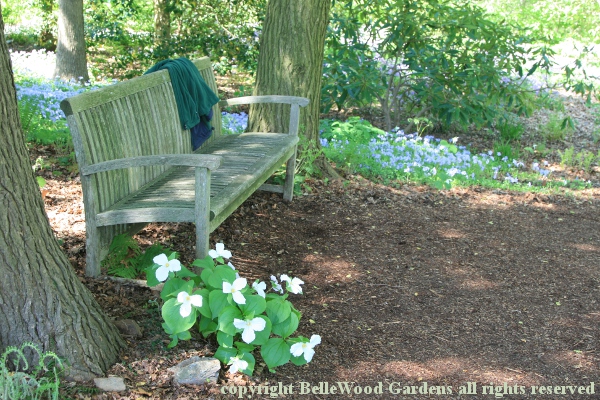
Mt Cuba is especially known for its trillium collection which is of national significance
and has been accredited by the Plant Collections Network.

There is organization to these woodland plantings but they offer a sense of
plants growing naturally in community. Here, Trillium sulcatum "yellow",
the yellow form of the typically oxblood red Southern trillium, with phlox.

A charming pairing of trillium with foam flower, Tiarella cordifolia.
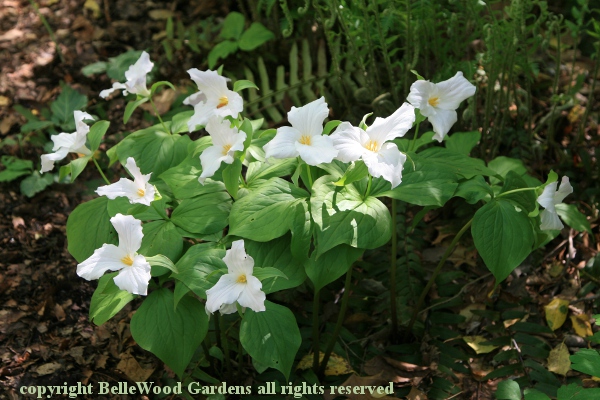
Large-flowered wake robin, Trillium grandiflorum. Trillium with a small stem
or pedicel have green leaves and larger flowers that open more widely than do
those sessile species which do not have a pedicel and mottled leaves.

Of course this Trillium stamineum is hardly the most lovely of the sessile trilliums . . .

.
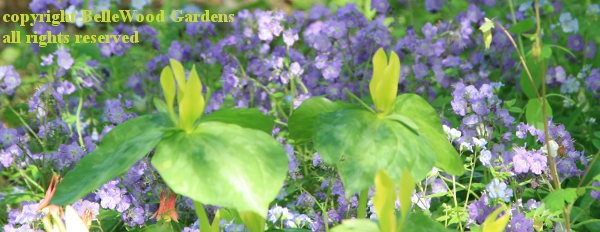
Trillium luteum is much handsomer, with a delicious citrus fragrance.
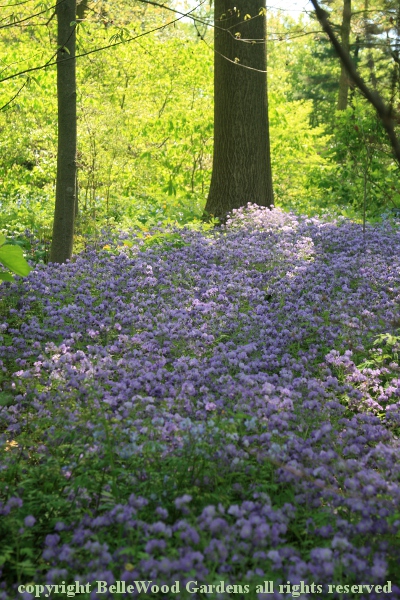
It was growing with a mass, a sweep, a drift of
Phacelia bipinnatifida, a biennial scorpion weed.
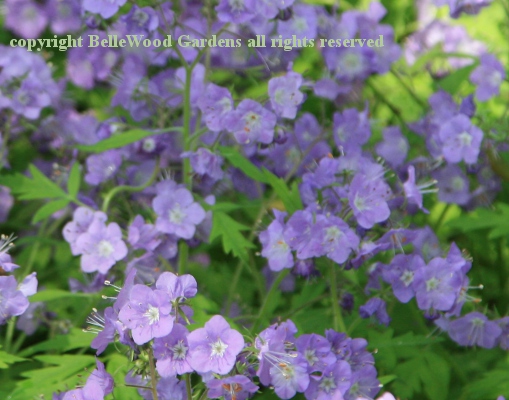
I asked and apparently once established it is "a good doer"
(meaning somewhat thuggish.) Problem is getting it started.

Here it is paired with our dainty native Aquilegia canadensis.
When you see the columbine in bloom it is time to put out
your hummingbird feeders. They'll be back from their migration

Another groundcover I became enchanted with, Oxalis violacea.
I have some South African species as potted plants in my cool
temperature greenhouse. Now to find this for my garden!
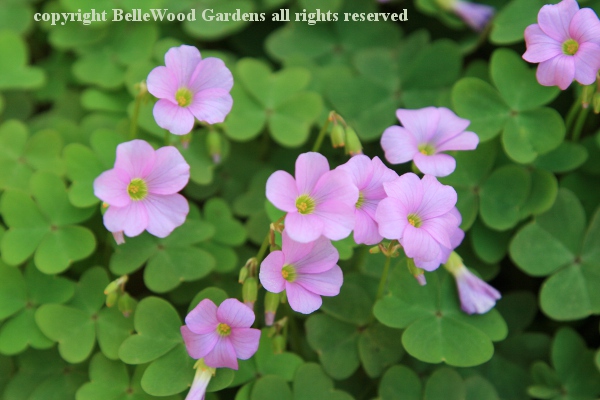
.
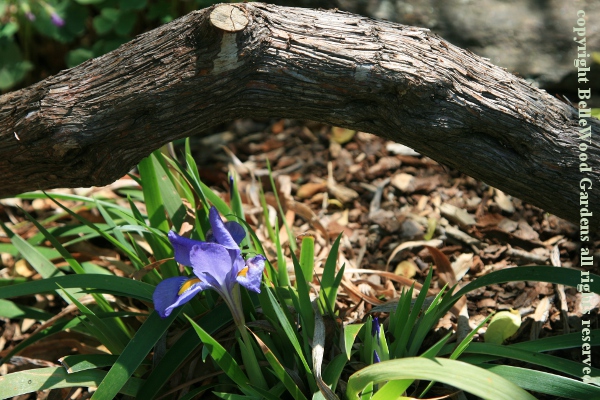
The boundary edge between sun and shade is often difficult.
Plants want sun OR shade. Crested iris, Iris cristata, is adaptable,
very useful for such transition areas. It comes in this lovely blue

and also in a clean, clear white with yellow bee guide on the falls.
This little iris spreads with arching runners just above soil surface.

Even non-flowering plants add their beauty to the woodland garden,
exemplified by this charming polypody, weaving amidst a gnarly log.
Back to April 2017
Back to the main Diary Page